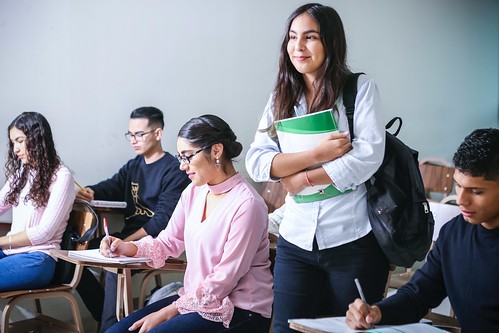For teachers, creating a classroom environment where students feel safe and respected while also fostering an atmosphere of learning can be a difficult balancing act. If your students are not behaving as expected, it can make teaching more challenging and ultimately impede learning.
Here are four tips to help you improve your students' behavior and create a positive learning environment for everyone.

1. Set Clear Rules and Expectations
Establishing clear rules and expectations helps create an orderly learning environment, leading to improved student behavior. Intervening early also helps to prevent student misbehavior from escalating, as long as the intervention is applied fairly and consistently across all students. As a teacher, you can explain your expectations for classroom behavior in advance and remind students of these expectations throughout the school year.
A classroom charter or mission statement that students agree to adhere to can also be beneficial in setting expectations, with the agreement monitored over time to check if they're still being met. Making sure that boundaries are respected, and any appropriate consequences are firmly but fairly enforced will help maintain equilibrium in the learning environment where everyone can reach their academic potential.
2. Establish Good Relationships With Your Students
The best way to improve your student's behavior is to have a good relationship with them. Make sure your classroom is an environment that encourages positive interactions and communication between you and your students. Take the time to get to know each of your students; understand their personalities, goals, and struggles.
Build a rapport with them, so they feel comfortable coming to you for help and have an open dialogue about their difficulties. Sign up for online counseling master programs to help you advise them accordingly. This can help create a more conducive learning environment, as your students will be more engaged in class activities since they trust in the relationship you've created. Likewise, ensure you clearly communicate classroom expectations and offer plenty of opportunities throughout the year for a healthy give and take between the teacher and student.
3. Encourage Positive Behavior
This can be done by praising good efforts, celebrating success, and recognizing improvement with something fun like a treat or game. In addition, it's important to provide meaningful feedback and acknowledge each student's unique efforts. These validations show that a teacher values their engagement and effort.
Setting clear expectations beforehand will help ensure that everyone is on the same page when it comes to behavior, what works in one context may not work in another. Lastly, we must remember that all students can demonstrate positive behavior; setting an example through one's conduct is also necessary to establish a balanced learning environment.
4. Adjust Your Scoring Methods
When students receive grades that more accurately reflect their effort and not just knowledge recall, they are more likely to take ownership of their learning process, understand what is required for success, and act accordingly. This can be easily achieved by focusing on elements such as participation, problem-solving skills, and communication rather than simply relying on tests and quizzes.
Additionally, offering more creative assessment opportunities, such as projects with multiple deliverables and presentations, can help keep students engaged with their learning and create an environment where collaboration is embraced instead of feared.
Improving student behavior is an ongoing process that requires the right approach and proper tools. By setting clear expectations, building positive relationships with students, praising good behaviors, and adjusting scoring methods, teachers can create a better learning environment where everyone feels respected and encouraged to reach their full potential.
